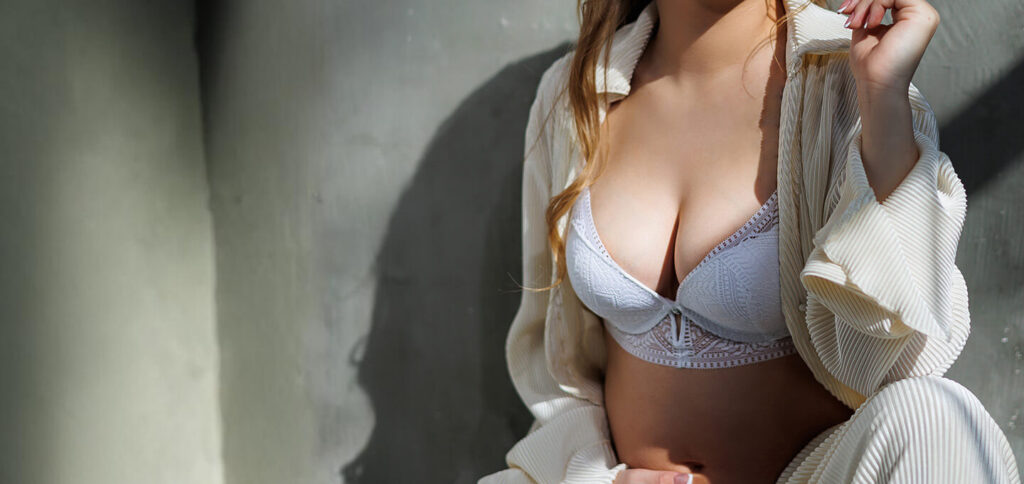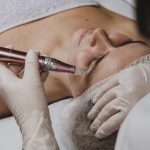Breast reduction surgery, also known as reduction mammaplasty, removes excess breast tissue, skin, and fat to create a lighter, more proportionate shape. For many patients, it’s not a cosmetic decision; it’s a solution to relieve chronic pain in the neck, back, and shoulders. It also helps relieve uncomfortable bra strap grooves, skin irritation, limited mobility during exercise, and self-consciousness.
One of the most common questions patients have is:
How big do your breasts need to be to get a reduction?
This guide provides a detailed explanation of how candidacy for breast reduction is determined.
How Large Do Your Breasts Need to Be to Get a Reduction?
While many people assume that cup size is the primary factor for breast reduction eligibility, this is not the case. Bra sizing can vary widely between manufacturers and is not a medically standardized measurement. Instead, eligibility for breast reduction is determined by a combination of factors, including breast volume, physical symptoms, body proportions, and overall health impact.
Key Factors That Determine Eligibility for Breast Reduction
Some of the key factors that determine eligibility for breast reduction include:
Breast weight and tissue volume
One of the main factors is how heavy your breasts feel and how much tissue might need to be removed to help relieve discomfort. Some people with smaller-looking breasts still feel significant pressure and pain, depending on their body type and how their breasts are shaped.
Physical symptoms
If your breasts are causing regular pain or strain, that’s a major sign. This might include:
- Ongoing back, neck, or shoulder pain
- Grooves from bra straps into your skin
- Rashes or irritation under your breasts
Lifestyle
Your breasts shouldn’t hold you back from living comfortably. You might be a good candidate for a reduction if:
- You avoid certain exercises or activities because of discomfort
- You struggle to find clothes or bras that fit well
- You feel self-conscious
What is the Consultation Process of Breast Reduction?
When you’re thinking about breast reduction, your consultation is your starting point, and an important one. It’s your opportunity to question, express your worries, and discover whether the procedure suits your requirements. It’s also when the healthcare professionals will learn about your aspirations and lifestyle.
Here’s what to expect at your appointment:
- Patient intake process: You will complete some general health forms and explain your reasons for considering surgery. This will inform your provider of your needs.
- Examining your health: After you have completed the form, your provider will ask information about medications, surgeries in the past, pregnancies, breastfeeding plans, and lifestyle habits. All of these assist in deciding if breast reduction is right for you.
- Physical examination: A few simple tests are needed to verify candidacy.
- Expectations: You’ll be informed about what the procedure is, including how it’s done and scarring. During this phase, you can ask questions about the surgical process, insurance, and so on.
Surgical Procedure
Once your consultation is complete and you’ve decided to move forward, the next step is the procedure. Breast reduction surgery is carefully planned and performed to reduce excess tissue and improve comfort. Here’s the surgical procedure:
- Preparing for surgery: On the day of your procedure, you will arrive at Northwest Face & Body, check in, and change into a surgical gown. The surgeon might make some markings on your chest while you’re standing. This helps guide the surgery and is completely normal.
- Anesthesia: Breast reduction surgery is performed under general anesthesia.
- Surgical Process: Incisions are made based on the most appropriate techniques for your needs, which can include the anchor, the vertical, or even liposuction. After this, excessive tissue, fat, and skin are removed to reduce the size and weight of the breasts. The nipple and areola are repositioned to a higher, more natural-looking placement. The breast is reshaped to achieve a more lifted and balanced appearance.
- Closing and dressing: After reshaping is complete, the incisions are closed with sutures. Surgical dressings or a soft compression bra are applied to minimize swelling and provide support.
Recovery and Aftercare
It’s normal to have some tightness, soreness, and swelling across the chest. You will be medicated for pain to alleviate discomfort, and most patients are cautioned to take it easy with their upper body slightly elevated. During this time, you will need to wear a compression garment or surgical bra, as it helps reduce swelling and support new breast contours.
You will also be given specific directions on how to look after your incisions and any surgical drains. Stitches are typically dissolvable or taken out during the follow-up visit. While short walks are okay early on to ensure circulation, you must avoid heavy lifting, bending, or strenuous activity for at least 4 to 6 weeks.
Follow-up visits are a crucial aspect of healing. Your visits provide an opportunity for your provider to check on your healing, answer questions, and confirm that there are no complications.
Still Wondering If You’re the Right Candidate for Breast Reduction?
If you’ve been living with daily discomfort, back or shoulder pain, it may be time to explore your options.
At Northwest Face & Body, we take the time to listen. Our team provides thoughtful guidance so you can make an informed decision based on your needs and goals.
Schedule a private consultation with our experienced healthcare professionals.
Call us at (425) 475-4111 today to schedule a breast reduction appointment or fill out the online form.
Additional readings:
Can You Breastfeed After A Breast Reduction?







